 W
WJohn Adamson was a Scottish minister and academic.
 W
WAlasdair Crotach MacLeod is considered to be the eighth chief of Scottish Clan MacLeod. He was the son of the seventh chief William Dubh and succeeded his father in 1480, following William Dubh's death at the Battle of Bloody Bay. He was the first MacLeod chief not to be buried on the island of Iona. The Scottish Gaelic word crotach means "humpbacked" and the nickname refers to wounds he received during battle which crippled him the rest of his life. Alasdair Crotach's tomb is one of the most magnificently carved tombs of its era in Scotland. He was succeeded by his son, William.
 W
WJohn Stewart, Duke of Albany was regent of the Kingdom of Scotland, Duke of Albany in peerage of Scotland and Count of Auvergne and Lauraguais in France.
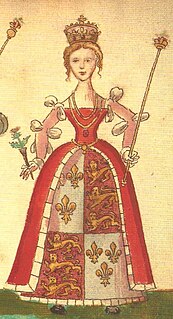 W
WJoan Beaufort was the Queen of Scotland from 1424 to 1437 as the spouse of King James I of Scotland. During part of the minority of her son James II, she served as the regent of Scotland.
 W
WBlack Morrow, also known as Black Murray and Outlaw Murray, is the name given to a late 15th century Scottish outlaw. A popular ballad makes the bandit as living in Ettrick Forest, while a recorded oral tradition, a wood in Kirkcudbrightshire. In the tradition, the outlaw is described as a Gypsy, Moor, a Saracen or, more commonly, an Irishman or from Ireland. The folklorist David MacRitchie took a strong interest in the ethnicity of the outlaw because of his dark skin, and the story is commonly quoted in modern Afrocentrist literature. Others however have disputed whether the bandit was dark skinned, or a "Blackimore".
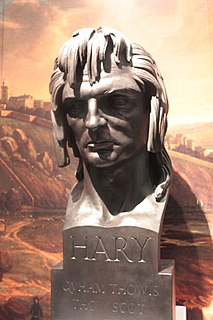 W
WBlind Harry, also known as Harry, Hary or Henry the Minstrel, is renowned as the author of The Actes and Deidis of the Illustre and Vallyeant Campioun Schir William Wallace, more commonly known as The Wallace. This was a lengthy poem recounting the life of William Wallace, the Scottish independence leader, written around 1477, 172 years after Wallace's death.
 W
WSir William Borthwick, 3rd of Borthwick and later 1st Lord Borthwick was a Scottish peer and ambassador.
 W
WAlexander Stewart, 2nd Earl of Buchan was the only son of James Stewart, 1st Earl of Buchan, and Margaret Ogilvy. Alexander succeeded to the Earldom and the Barony of Kingedward and other lands, probably in 1499, as he got sasine of the Earldom on 23 January 1499/1500. On 21 January 1490/1491 he got from his father a Charter to himself and his first wife, Isobel Ogilvy, of the lands of the Barony of Kettins and others; and on 6 February 1499/1500, another of the same lands to himself and his second wife, Margaret Ruthven.
 W
WAlexander Stewart, Earl of Buchan, Alasdair Mór mac an Rígh, and called the Wolf of Badenoch, was the third surviving son of King Robert II of Scotland and youngest by his first wife, Elizabeth Mure of Rowallan. He was the first Earl of Buchan since John Comyn, from 1382 until his death. Alexander married the widowed Euphemia I, Countess of Ross, but they had no children. He did have a large family by his longtime mistress, Mairead inghean Eachainn. Alexander was Justiciar of Scotia for a time, but not an effective one. He held large territories in the north of Scotland before eventually losing a large part of them. Alexander is remembered for his destruction of the royal burgh of Elgin and its cathedral. His nickname was earned due to his notorious cruelty and rapacity, but there is no proof that it was used during his lifetime.
 W
WWalter Chepman was a Scottish merchant, notary and civil servant active in the late fifteenth and early sixteenth centuries. Chepman served at the Scottish court during the reigns of James IV and James V. In partnership with Androw Myllar he established Scotland's first printing press in 1508. Chepman was also a significant patron of Saint Giles' Kirk in Edinburgh.
 W
WRobert Cochrane is said to have been an architect or mason who lived in the reign of King James III of Scotland and who became a royal favourite. His influence over the king is said to have incurred the wrath of the aristocracy, culminating in a coup in which he was killed.
 W
WJames Douglas, 7th Earl of Douglas, 1st Earl of Avondale, latterly known as James the Gross, and prior to his ennoblement as James of Balvenie, was a late mediaeval Scottish magnate. He was the second son of Archibald Douglas, 3rd Earl of Douglas and Joan Moray of Bothwell and Drumsargard, d. after 1408.
 W
WAnabella Drummond was the queen consort of Scotland by marriage to Robert III of Scotland.
 W
WWilliam Dunbar was a Scottish makar poet active in the late fifteenth century and the early sixteenth century. He was closely associated with the court of King James IV and produced a large body of work in Scots distinguished by its great variation in themes and literary styles. He was likely a native of East Lothian, as assumed from a satirical reference in The Flyting of Dumbar and Kennedie. His surname is also spelt Dumbar.
 W
WWilliam Elphinstone was a Scottish statesman, Bishop of Aberdeen and founder of the University of Aberdeen.
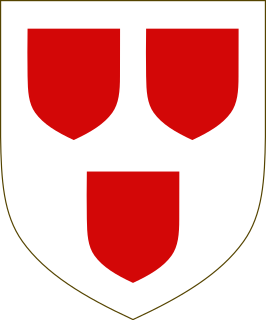 W
WNicholas Hay, 2nd Earl of Erroll was a Scottish peer. He was the second Earl of Erroll and the third Lord Hay of Erroll.
 W
WWilliam Hay, 3rd Earl of Erroll PC was a Scottish peer. He was the third Earl of Erroll and the fourth Lord Hay of Erroll.
 W
WWilliam Hay, 4th Earl of Erroll, styled as Lord Hay until 1507, was a Scottish peer and soldier. He was killed at the Battle of Flodden.
 W
WWilliam Hay, 5th Earl of Erroll was a Scottish peer and statesman.
 W
WWilliam Hay, 1st Earl of Erroll was a Scottish peer. His was the first Earl of Erroll and the second Lord Hay of Erroll.
 W
WDavid Fleming, Lord of Biggar, Lenzie and Cumbernauld was a Scottish nobleman.
 W
WLady Catherine Gordon was a Scottish noblewoman and the wife of Yorkist pretender Perkin Warbeck, who claimed he was Richard of Shrewsbury, Duke of York. After her imprisonment by King Henry VII of England, she became a favoured lady-in-waiting of his wife, Elizabeth of York. She had a total of four husbands, but there are no records she had any surviving children.
 W
WJames Haldenston or James Haldenstoun was an Augustinian churchman from 15th-century Scotland. Probably from somewhere in eastern Fife, Haldenston became an Augustinian at St Andrews, earned several degrees on the continent, and became prior of May before becoming prior of St Andrews, head of the wealthiest and most important religious house in Scotland.
 W
WSir Walter de Haliburton, 1st Lord Haliburton of Dirleton, Lord High Treasurer of Scotland was a Scottish noble.
 W
WIsabella Stewart, was a Scottish princess who became Duchess of Brittany by marriage to Francis I of Brittany. Also known as Isabel, she was the second daughter of James I of Scotland and Joan Beaufort.
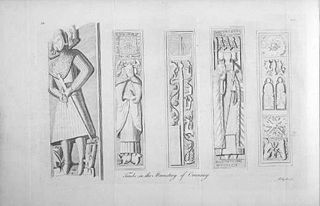 W
WDonald, Lord of the Isles, was the son and successor of John of Islay, Lord of the Isles and chief of Clan Donald. The Lordship of the Isles was based in and around the Scottish west-coast island of Islay, but under Donald's father had come to include many of the other islands off the west coast of Scotland, as well as Morvern, Garmoran, Lochaber, Kintyre and Knapdale on the mainland.
 W
WJames Kennedy was a 15th-century Bishop of Dunkeld and Bishop of St. Andrews, who participated in the Council of Florence and was the last man to govern the diocese of St. Andrews purely as bishop. One of the Gaelic clan of Carrick he became an important figure in the government of the minority of King James III of Scotland as well as founder of St Salvator's College, St Andrews.
 W
WKenneth Mackenzie, traditionally reckoned 7th of Kintail and nicknamed Coinneach a'bhlair, was a Highland chief, being head of the Clan Mackenzie.
 W
WJohn Major (1467–1550) was a Scottish philosopher, theologian, and historian who was much admired in his day and was an acknowledged influence on all the great thinkers of the time. A renowned teacher, his works were much collected and frequently republished across Europe. His "sane conservatism" and his sceptical, logical approach to the study of texts such as Aristotle or the Bible were less prized in the subsequent age of humanism where a more committed and linguistic/literary, approach prevailed. His influence in logic, science, politics, Church, and international law can be traced across the centuries and appear decidedly modern, and it is only in the modern age that he is not routinely dismissed as a scholastic. His Latin style did not help – he thought that "it is of more moment to understand aright, and clearly to lay down the truth of any matter than to use eloquent language". Nevertheless, it is to his writings, including their dedications, that we owe much of our knowledge of the everyday facts of Major's life – for example his "shortness of stature". He was an extremely curious and very observant man, and used his experiences – of earthquakes in Paisley, thunder in Glasgow, storms at sea, eating oatcakes in northern England – to illustrate the more abstract parts of his logical writings.
 W
WMargaret of Denmark was Queen of Scotland from 1469 to 1486 by marriage to King James III. She was the daughter of Christian I, King of Denmark, Norway and Sweden, and Dorothea of Brandenburg.
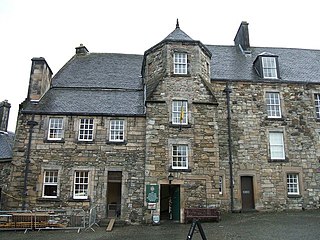 W
WWalter Merlioun, was a Scottish master mason based in Edinburgh.
 W
WJames Douglas, the 4th Lord of Dalkeith, was created the 1st Earl of Morton in 1458.
 W
WAndrew Munro [de Munro, de Munroy], or Aindréas Mac an Rothaich as his Gaelic kindred name, was a Scottish churchman active in the 15th century, undoubtedly given his surname a native of Ross of Clan Munro.
 W
WSir Alexander Napier, 2nd Laird of Merchiston was a Scottish politician and diplomat. He thrice served as Provost of Edinburgh, and served as Commissioner for Edinburgh in the parliaments of 1458, 1463, 1464, 1469, 1471 and 1473.
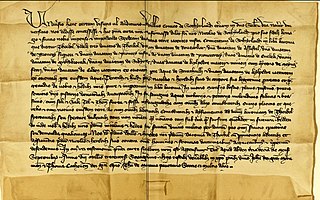 W
WNicholas Sutherland, 1st of Duffus was a Scottish noble who was seated at Duffus Castle, near Elgin, Moray, Scotland in the 14th and 15th centuries.
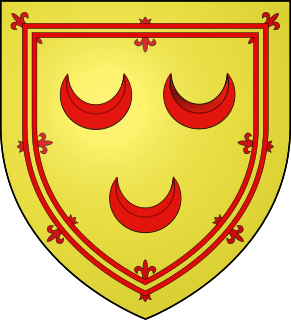 W
WWillam Seton, born William de Wyntoun, was a 14th–15th-century noble.
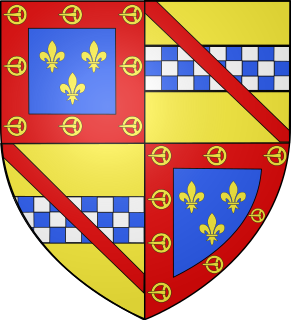 W
WSir John Stewart of Darnley, 1st Comte d'Évreux, 1st Seigneur de Concressault, 1st Seigneur d'Aubigny was a Scottish nobleman and famous military commander who served as Constable of the Scottish Army in France, supporting the French against the English during the Hundred Years War. He was a fourth cousin of King James I of Scotland, the third monarch of the House of Stewart.
James Stewart was a prelate from 15th century Scotland. Stewart was a member of the Stewart kindred of Lorne. He was Dean of Moray from 1435 until 19 May 1460, when he was provided to the bishopric. He was consecrated as Bishop of Moray sometime towards the end of the year. He resigned the see two years later in the papal curia in favour of his brother, David Stewart. He died on 5 August 1466.
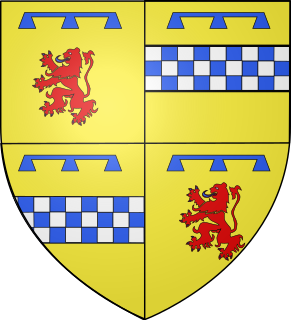 W
WJames "Beag" Stewart (c1424-1470) of Baldorran was the seventh illegitimate son of James Mor Stewart, who fled into exile in Ireland when his father Murdoch Stewart, Duke of Albany was executed for treason by James I of Scotland in 1425. James the Fat would never return to Scotland, and he was unable to inherit the Albany estates, but James "Beag" Stewart was able to secure a royal pardon and return to Scotland. He is the ancestor of the Stewarts of Ardvorlich on Lochearnside, whose family history is recounted by Sir Walter Scott in A Legend of Montrose.
 W
WJames Mor Stewart, called James the Fat, was the youngest son of Murdoch Stewart, Duke of Albany and Isabella of Lennox. When his father and brothers were executed by King James I for treason in 1425, James led a rebellion against the king, taking the town of Dumbarton and killing the keeper of Dumbarton Castle. His success was short lived and he soon fled to Ireland, where he would spend the remainder of his life in exile. A second attempt at rebellion in 1429 saw a fleet sail to Ireland to collect James "to convey him home that he might be king", but he died before the attempt could be made.
 W
WMargaret Stewart was a princess of Scotland and the dauphine of France. She was the firstborn child of King James I of Scotland and Joan Beaufort.
 W
WSir William Stewart (c.1440–c.1500), 2nd Laird of Baldorran, 1st Royal Bailie of the Crown lands of Balquhidder, was a fifteenth-century Scottish landowner, and founder of the Balquhidder Stewart clan. He was the grandson of James Mhor Stewart who launched a failed bid for the Crown of Scotland in 1429.